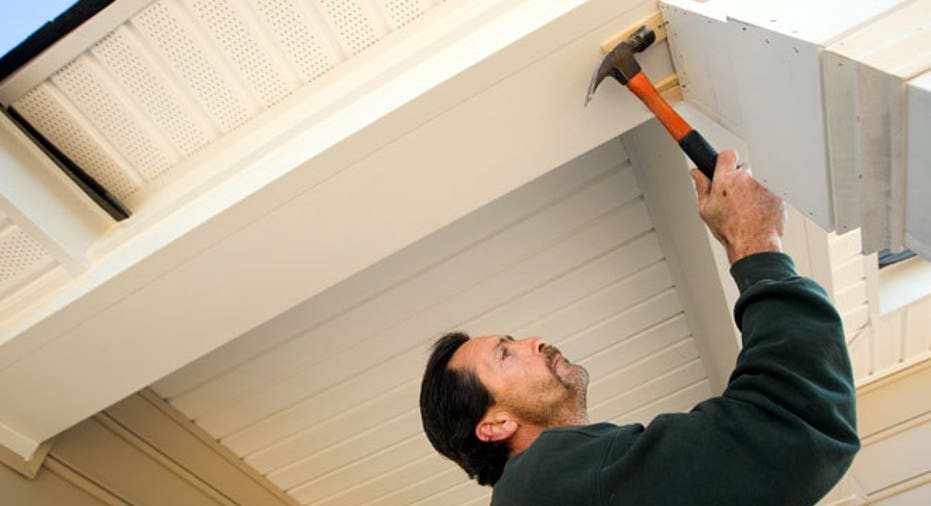How to Best Prep Your Home for Spring

As winter gives way to spring’s warmer weather and longer days, it’s time to prep your home for spring.
“We’re coming out of winter and have just had some huge snowstorms,” says Jim Gustin, senior property specialist with Travelers' risk control department. Spring weather offers its own challenges including heavy rainfall, flooding and wild fires, but there are steps you should take inside and outside your home to protect your belongings and prevent damage to your property.
While your homeowner’s policy will cover most damage, “people are concerned about insurance premiums but you can pay the cheapest rate by being loss free,” says Melissa Digby, national loss prevention director at insurance company USAA.
As you prepare for summer barbeques and pool parties, experts suggest the following tips to protect your home from Mother Nature.
Prep the Exterior
Roofs. “Winter can be really hard on your roof, which can result in cracked, missing or curling shingles,” says Digby. These can create gaps where water can enter and cause damage.
“Force yourself to take a nice, slow walk around the perimeter of your house and see where all the water’s going from off your roof,” says home improvement expert Danny Lipford. Use binoculars to examine your roof for any loose, curling or missing shingles—curling shingles are at their life expectancy. Also look for nails that have popped. If you see any damaged shingles, experts suggest having a professional do an inspection to determine the extent of the damage.
Catching problems early are key to minimizing the damage and financial strain. “It’s good to use a polyurethane caulk to seal up any cracks [on shingles and bricks] that might allow water to come into a house,” says Lipford.
If you have to replace your roof, Digby suggests using ring shank nails to reinforce your roof in high winds and sealing the seam along the roof deck with roof tape.
Experts also suggest inspecting and checking for water damage in the attic near roof trusses.
Gutters. Clean gutters twice a year, says Digby. This prevents water from building up and eventually damaging sheetrock or anything else water might contact.
Once your gutters are cleaned and you’ve checked that they’re firmly attached, Lipford suggests checking for leaks by covering the downspout before filling gutters with a few inches of water. Once the gutters are drained, make repairs with caulk.
Landscape Grading. Make sure that water drains away from the house as it goes from your roof to your gutter to your downspout, says Lipford. “Sometimes landscaping causes a damming effect which can cause water leakage in basements and a deterioration of the foundation—it can cause settling.”
Trees. “We’re less than three months out for hurricane season—there’s potential for damage from high winds,” says Gustin. “Remove any dead trees and damaged limbs that are overhanging your home.” Call a tree trimming company or your utility company to take care of trees close to utility lines.
Foundation. Inspect the foundation, sidewalks and other concrete flat areas around your house for any cracks. “It prevents water from getting under it which can be a tripping hazard and is unsightly,” says Lipford. “Water getting under a slab will permanently affect the soil condition and can generate settling and a hole.” To avoid having to replace cracked concrete, Lipford suggests sealing cracks with about $10 of caulk.
Chimney. There may be minor cracks that you can’t see in your chimney that allow water to come into your home, says Lipford. Use masonry spray on the outside bricks to prevent any water from coming into your home.
Lightening protection systems. Lightening can cause fires as well as damage to any electrical components in your home. “The roof can be fully engulfed in fire before anyone knows there’s a fire,” says Welther. Lightening protection systems prevent damage and fires by diverting lightening away from your home.
Install Sump Pumps and Backup Generators
Welther suggests having an appropriately-sized sump pump to keep up with the water flow, as well as a battery-powered pump as a backup during a power outage.
Maintain Your Air Conditioner
Experts suggest having your unit professionally cleaned and inspected before turning it on for the season. You should also replace the air filter to keep the unit operating more efficiently and lower utility bills.
Digby also recommends having a professional install a float switch on your air conditioner to prevent water damage if there’s an overflow.
Check Water Hoses Inside the Home
Plumbing, flexible hoses and toilet supply lines can also cause severe water damage. Gustin suggests replacing flexible hoses to washing machines, icemakers and certain dishwashers every three to five years or at the end of the warranty term. Although the claim is likely covered by insurance, the water from a broken hose can ruin floors, drywall, carpets and trim.
Be Prepared for Wildfires
In western parts of the US, springtime’s hot and dry conditions create the perfect environment for wildfires. Clear fuels, like woodpiles or flammable materials, from within 100 feet of your home, recommends Welther, and replace brush with fire- resistant vegetation and plants.
Installing screens over attic vents will prevent flying embers that can travel over two miles from entering into your home.
Check with your insurance carrier on whether they offer a wildfire program to help you make your home safe.
Create an Evacuation Plan
In the event of a disaster, make sure you create and review an evacuation plan to protect your family, says Welther. This includes designated meeting places and contact numbers since cell phone usage will be at its peak in a crisis.
Keep important documents, personal affects, and food and water ready in a backpack if you live in an area that’s vulnerable to fires or hurricanes.